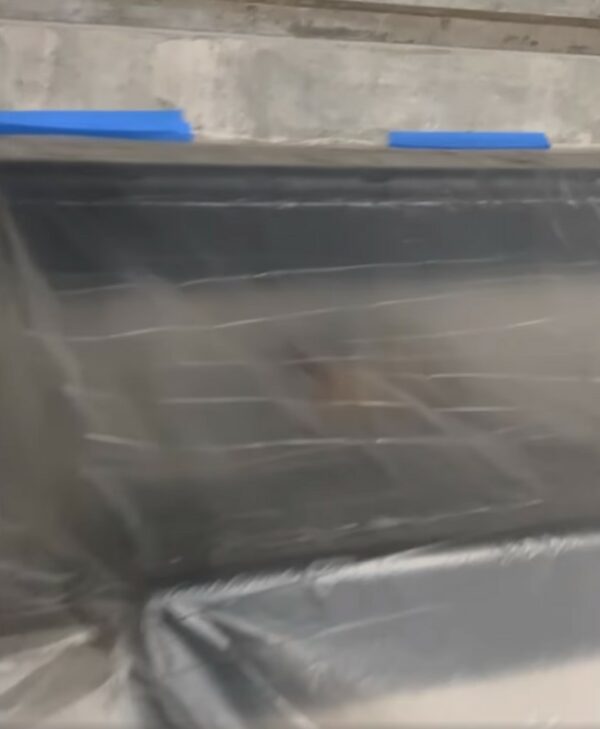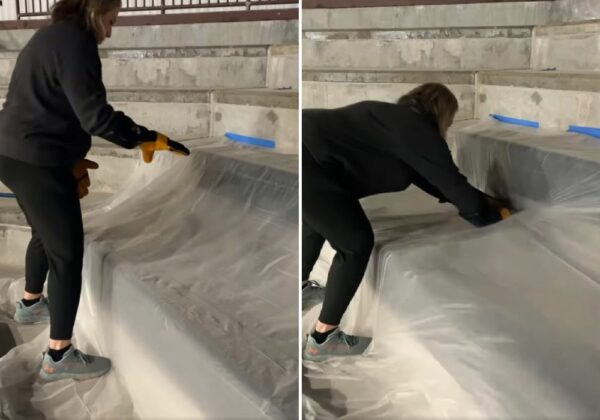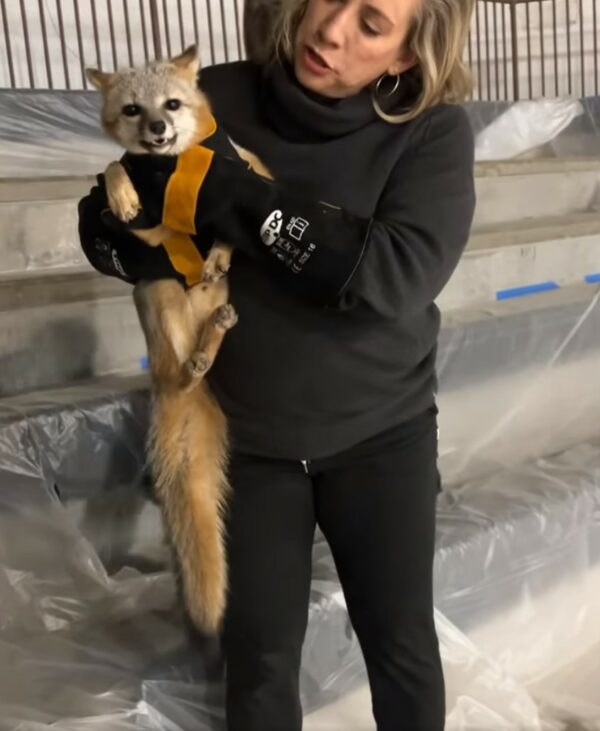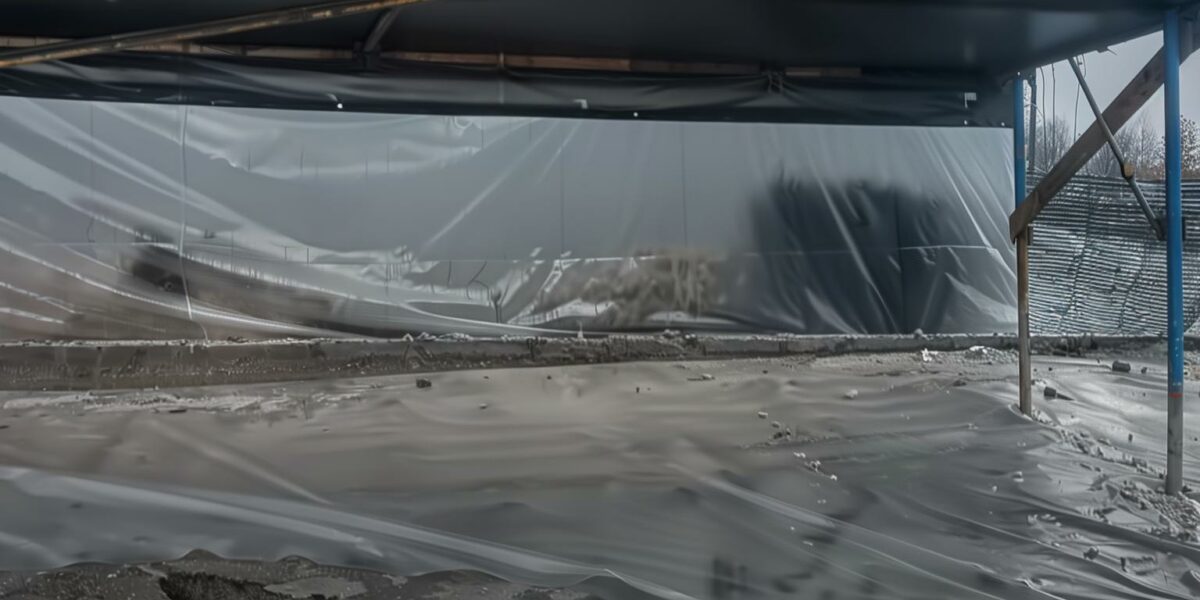A Chilling Discovery Amidst Construction
While the chilly winds swept across the new building site of Bushland High School, Texas, a group of construction workers stumbled upon something unexpected. A subtle rustling under a tarp caught their attention in the midst of their routine tasks. Approaching cautiously, they spotted a shadowy figure beneath the cover. Initially hesitant, the workers debated their next moves, unsure of the creature’s identity or the potential dangers it posed.
Compelled by the near freezing temperatures, concern for the mysterious animal grew. The decision was made to contact the Wild West Wildlife Rehabilitation Center, hoping for a rescue from the harsh elements. The response from the center was swift, marking the beginning of an unexpected rescue mission that stirred the hearts of everyone involved.
Stephanie Brady, the executive director of the rehabilitation center, along with her assistant, arrived prepared for a challenging capture. Peering under the tarp, they identified the frightened occupant: a gray fox, likely seeking refuge from the biting cold. Equipped with a catchpole, net, and welding gloves, they braced for a potential chase.
Brady anticipated a swift and possibly wild pursuit across the school grounds. “I was thinking it was going to be a foot chase,” she recounted, prepared for the fleeting opportunity to secure the fox. However, the tarp facilitated an unexpected advantage, allowing Brady and her assistant a simpler task than anticipated. With coordinated effort, they successfully enveloped the fox in safety.
Rescue and Rehabilitation
Once secured, the fox’s journey from the cold under the tarp to the warmth of human care began. At the rehabilitation center, the fox was treated not just as another animal, but with a profound respect for its wild nature. Brady’s team worked diligently, treating the animal for fleas and worms, ensuring it received the necessary care to thrive once returned to the wild.

The environment at the center was a stark contrast to the wild, yet the fox gradually adapted, accepting the temporary shelter and the treats provided. Despite the comfort, the longing for its natural habitat was evident in its eyes, a poignant reminder of the wild spirit confined temporarily within walls.
As the days passed and the weather mellowed, preparations for the fox’s release were underway. The team ensured that the fox was not only healthier but also stronger for its return to the wilderness. The release was a carefully planned event, aimed at reintroducing the fox to its home territory, ensuring the best chances of survival.
“He has a wonderful prognosis,” stated Brady, confident in the future awaiting the fox post-recovery. The successful rescue and rehabilitation of the gray fox not only highlighted the dedication of the wildlife team but also underscored the importance of human intervention in the preservation of wildlife.
Reflections on a Heartfelt Endeavor
The encounter with the gray fox served as a poignant reminder of the unexpected encounters that often occur in the least expected places—like a construction site. For the workers and the rescue team, the experience was a stark illustration of the impact of human activities on wildlife.

The swift action taken by the construction workers and the rehabilitation team highlighted a crucial partnership between the public and wildlife conservationists. This collaboration is vital for the protection of animals displaced by urban development or natural habitats affected by extreme weather conditions.
Stories such as these resonate deeply, reminding us of the delicate balance between human progress and environmental stewardship. They challenge us to be more observant and compassionate towards the wildlife with whom we share our spaces.
As communities continue to expand and interact with natural habitats, the responsibility to act thoughtfully and care for our local wildlife becomes increasingly important. This story of a simple rescue mission underlines the broader, essential dialogue about coexistence and respect for life in all its forms.
Continuing the Legacy of Compassion
The narrative of the gray fox is not just a tale of rescue but a call to action for everyone to consider their role in wildlife conservation. It serves as an inspiring example of empathy and action, encouraging similar interventions around the globe. Each act of kindness, each decision to help, adds up, contributing to a culture of care and respect for nature.

Organizations like the Wild West Wildlife Rehabilitation Center are crucial, but they thrive only with community support. Engaging with and supporting these organizations can make a significant difference in the lives of many animals. Whether through volunteering, donations, or spreading awareness, each effort counts.
Moreover, this story emphasizes the need for educational initiatives to teach communities about local wildlife and the correct steps to take when encountering animals in distress. Knowledge and awareness are powerful tools that can lead to more successful conservation efforts.
Ultimately, the journey of the gray fox back to the wild is a testament to the resilience of nature and the human spirit’s capacity to foster that resilience. It’s a narrative that deserves sharing, to inspire further acts of kindness and conservation across communities, ensuring a safer, kinder world for all creatures.


